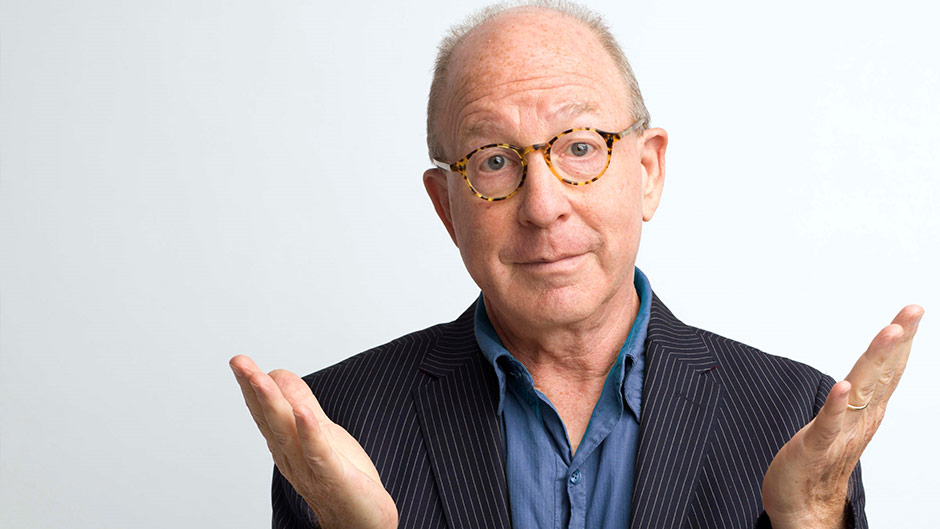Jerry Saltz: Art Critic, Pulitzer Winner & More - Insights & Bio
Who is Jerry Saltz, and why should you care? He's not just another art critic; he's a Pulitzer Prize winner, a bestselling author, and a leading voice shaping the conversation around contemporary art.
Jerry Saltz, the senior art critic and columnist for New York magazine and its entertainment site Vulture.com, has become a prominent figure in the art world. His insights and pronouncements carry weight, influencing both artists and audiences. Saltz doesn't merely review art; he dissects it, celebrates it, and challenges it, making him a vital force in the contemporary art landscape. His writing style is known for its directness, wit, and genuine passion for the subject matter.
Born in Chicago, Illinois, on February 19, 1951, Jerry Saltz has carved a unique path through the art world, transitioning from a self-described "failed artist" to a highly respected critic. Before dedicating himself to art criticism, Saltz had been an artist himself, experiencing the challenges and insecurities that often accompany creative pursuits. This personal experience provides him with a unique perspective, allowing him to connect with artists on a deeper level and offer informed, empathetic critiques. This understanding, along with his keen eye, allows him to recognize the core elements of art. He understands what it takes to be a creator.
- Exploring The World Of Myney A Comprehensive Guide
- What Disease Does Eddie Murphy Have Exploring The Health Challenges Of The Iconic Comedian
| Category | Details |
|---|---|
| Full Name | Jerry Saltz |
| Date of Birth | February 19, 1951 |
| Place of Birth | Chicago, Illinois, USA |
| Education | Details of his education are not widely publicized. |
| Career | Senior Art Critic and Columnist for New York magazine and Vulture.com |
| Known For | Winning the Pulitzer Prize for Criticism (2018), Author of "How to Be an Artist," Prolific Art Critic |
| Publications | Regular contributor to New York magazine and Vulture.com; Author of "How to Be an Artist" |
| Awards | Pulitzer Prize for Criticism (2018) |
| Social Media | Active on social media, particularly Instagram. |
| Personal Life | Details of his personal life are sometimes shared in his writings, but not extensively publicized. |
| Reference | New York Times |
Saltzs writing covers a broad spectrum of artistic endeavors, encompassing contemporary art shows, individual artists, film, music, and the broader cultural landscape. He doesnt shy away from tackling complex subjects, often delving into the historical context of art and its relevance to the present day. His voice, both online and in print, is a significant force in contemporary art criticism.
Saltz's perspective isn't limited to just critiquing the work of others. He draws from the wellspring of his own creative experiences and offers insights and practical advice to aspiring artists. In his book, "How to Be an Artist," he lays out 33 rules designed to guide creatives, covering everything from the importance of telling one's own story to the necessity of consistent work. He encourages artists to find their voice, embrace their unique perspective, and navigate the often-challenging terrain of the art world. He uses the examples of iconic artists like Louise Bourgeois, Andy Warhol, and Yayoi Kusama, to illustrate his points. This offers concrete examples for how the creative process works. Through his guidance, Saltz encourages the building of community to those who are interested in the art.
He is also a proponent of art's role in society and the importance of art education. Saltz often challenges traditional art-world hierarchies and advocates for greater inclusivity and accessibility. In a world increasingly dominated by digital imagery and fleeting trends, Saltz champions the enduring value of art and the artist's role in reflecting and shaping the human experience. He often reflects on the evolution of art, even as it changes.
- Exploring The Zzz Miyabi Element A Comprehensive Guide
- Noodle Magazine The Ultimate Guide To Your Favorite Noodle Dishes
In the world of art, as Saltz would likely tell you, context is key. This rings true for the history of art movements and the way they've evolved over time. For the past 150 years, Saltz would say, art movements have built on the innovations of artists. This is not to say that change is predictable, but that it is, in some ways, a function of the past.
Saltz's work isn't confined to the written word. He's an innovative user of social media. Through his engaging posts and interactions, he shares his thoughts on art, promotes artists, and engages with his audience in a dynamic and accessible way. He has become an influential figure online, using platforms like Instagram to expand the reach of art criticism and foster a broader conversation about art and culture. He has adapted with the times, and continues to be very involved with the digital sphere.
Saltz's influence extends beyond his reviews and essays. He is an advocate for artists and the value of art in society. This is evident in his online presence. He actively promotes artists, offers constructive criticism, and fosters a sense of community among art enthusiasts. He sees art as a reflection of our times.
In 2018, Saltz was awarded the Pulitzer Prize for Criticism, a testament to his significant contributions to the field. He acknowledges the influence of other critics on his work, specifically Roberta Smith, who he credits with helping him find his life and his calling. His accolades, however, haven't altered his voice and opinions. Saltz's writing is accessible and engaging.
Saltz's commentary also extends to the art world's larger structures and its inherent biases. This is particularly evident in his reappraisal of the modernist canon, with the opening of the new MoMA in sight. He often addresses the power dynamics within museums and galleries, advocating for a more inclusive and representative art world. He consistently critiques the structures of the art world itself.
Saltz's work engages in a critical dialogue on arts purpose and meaning. Through his analysis of artists like Gerhard Richter, he explores the timeless power of painting and its enduring relevance. He often draws parallels between past and present, exploring the impact of influential artists like Jackson Pollock.
In conclusion, Jerry Saltz is much more than a critic; hes a vital voice in the art world, a champion of artists, and a keen observer of our cultural landscape. His insightful critiques, his commitment to art education, and his embrace of new media have made him a leader in art criticism and a cultural force to be reckoned with. He is someone who is continuously evolving and helping others along the way.



Detail Author:
- Name : Roosevelt Reichel
- Username : bfranecki
- Email : mweber@hotmail.com
- Birthdate : 1984-05-24
- Address : 91812 Koepp Rest East Fletcherfurt, AK 32398
- Phone : +1-517-626-4235
- Company : Eichmann Inc
- Job : Construction Carpenter
- Bio : Excepturi repellat asperiores minus ut et. Et et quia est culpa et doloribus illum. Ipsam iure id impedit architecto.
Socials
instagram:
- url : https://instagram.com/jacobsona
- username : jacobsona
- bio : Odit illum totam quos ea labore. Et saepe eum occaecati illo sit.
- followers : 5214
- following : 2402
linkedin:
- url : https://linkedin.com/in/alessia_jacobson
- username : alessia_jacobson
- bio : Minima magnam nam ullam tenetur.
- followers : 1966
- following : 489
tiktok:
- url : https://tiktok.com/@alessiajacobson
- username : alessiajacobson
- bio : Sint eligendi dolores tempora deserunt hic.
- followers : 1745
- following : 1742